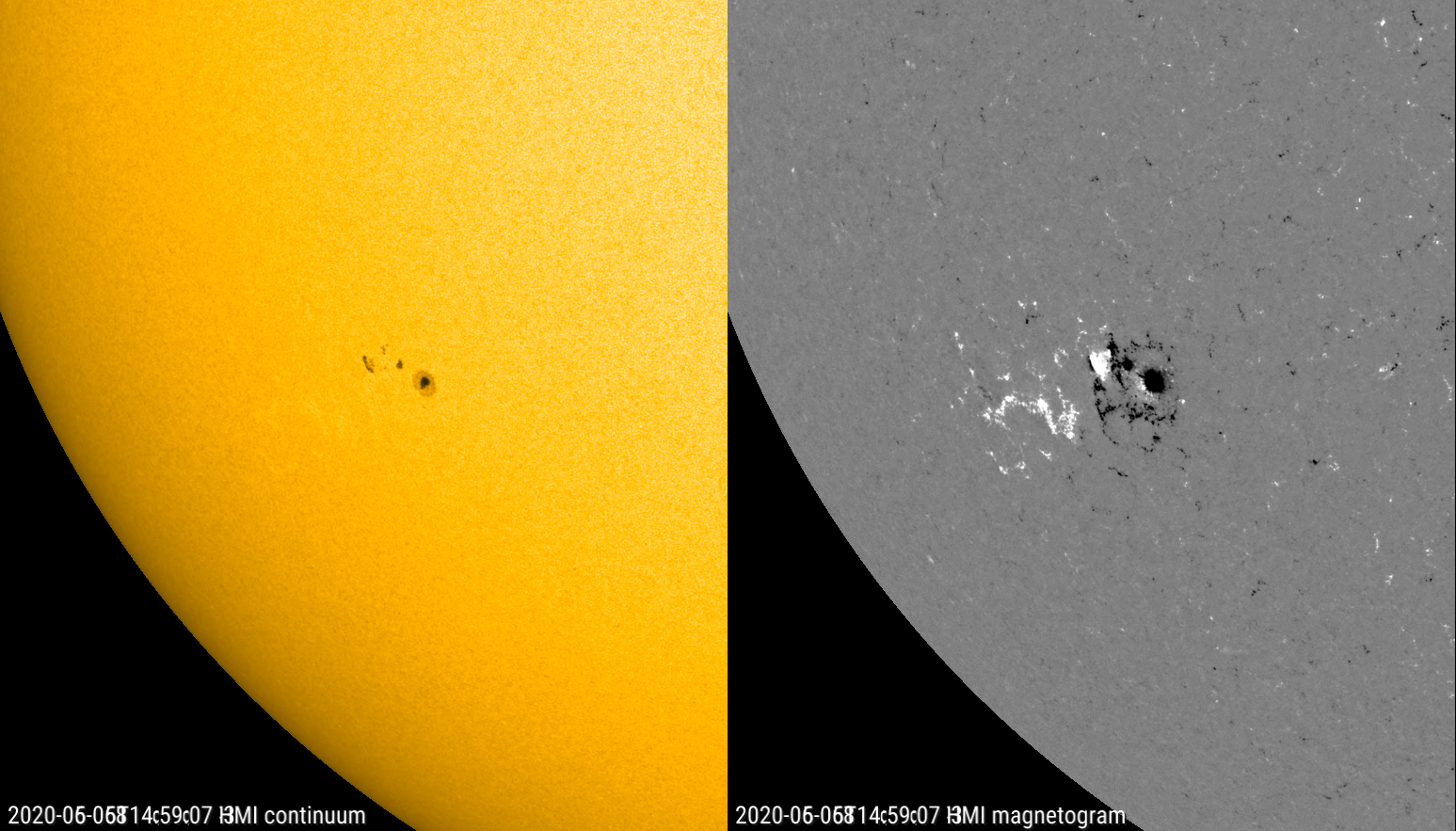On Saturday at 14:02:16 UTC, the USET solar telescopes (USET: Uccle Solar Equatorial Table) of the Royal Observatory of Belgium (ROB) imaged a transit of the International Space Station (ISS). ISS is the largest artificial object in space and it flies in a low Earth orbit at about 400 km altitude. Hence, this satellite can be seen with the naked eye as a moving bright point from the Earth's surface at night.

In the image above, the ISS appears as three successive black structures taken at around 250 milliseconds interval each. The striking feature of the ISS -its large solar panels- are nicely resolved with the white-light telescope at ROB. As the ISS moves fast (about 8 km/s), the total transit duration is very short, being only a fraction of a second (0.8 seconds for this event), hence it needs a fast recording camera to be caught.

One of the prime goals of USET is to monitor the solar activity by the observation of groups of dark spots covering the solar surface. A nice illustration of such sunspot group can be seen on the left side of the solar disk (see annotated image above). While being of medium size, this active region is very interesting as it is one of the first sunspot groups of the new solar cycle (see also this STCE Newsitem).


NOAA 2765 actually consisted of the initial single sunspot that rotated over the east limb early on 3 June, and a new small bipolar region that emerged on 5 June close to and to the northeast of this original sunspot. This can be seen in the SDO/HMI white light and magnetogram imagery above, with the white patches indicating where the magnetic field is coming out of the solar surface, and the black color indicates where the magnetic field is returning to the solar interior. Only where the magnetic field is sufficiently concentrated, sunspots can appear. The observed evolution of the sunspots explains the somewhat peculiar outlook of the sunspot group -as remarked by a number of amateur and professional solar observers-, with the main leading spot being oriented away from the equator compared to the trailing spots. Usually, it's just the other way around: the leading spot is tilted more to the solar equator than the trailing spot. Of course, being so close together (separation of only about 2-3 degrees), the spots have to be classified as a single region. This is because sunspot grouping and group classification has to be done based on visual observations only, to remain consistent with historical observations when magnetograms were not available. NOAA 2765 was one of the largest sunspot regions of the new solar cycle so far, but it has remained flare inactive (flaring level below C-class).





